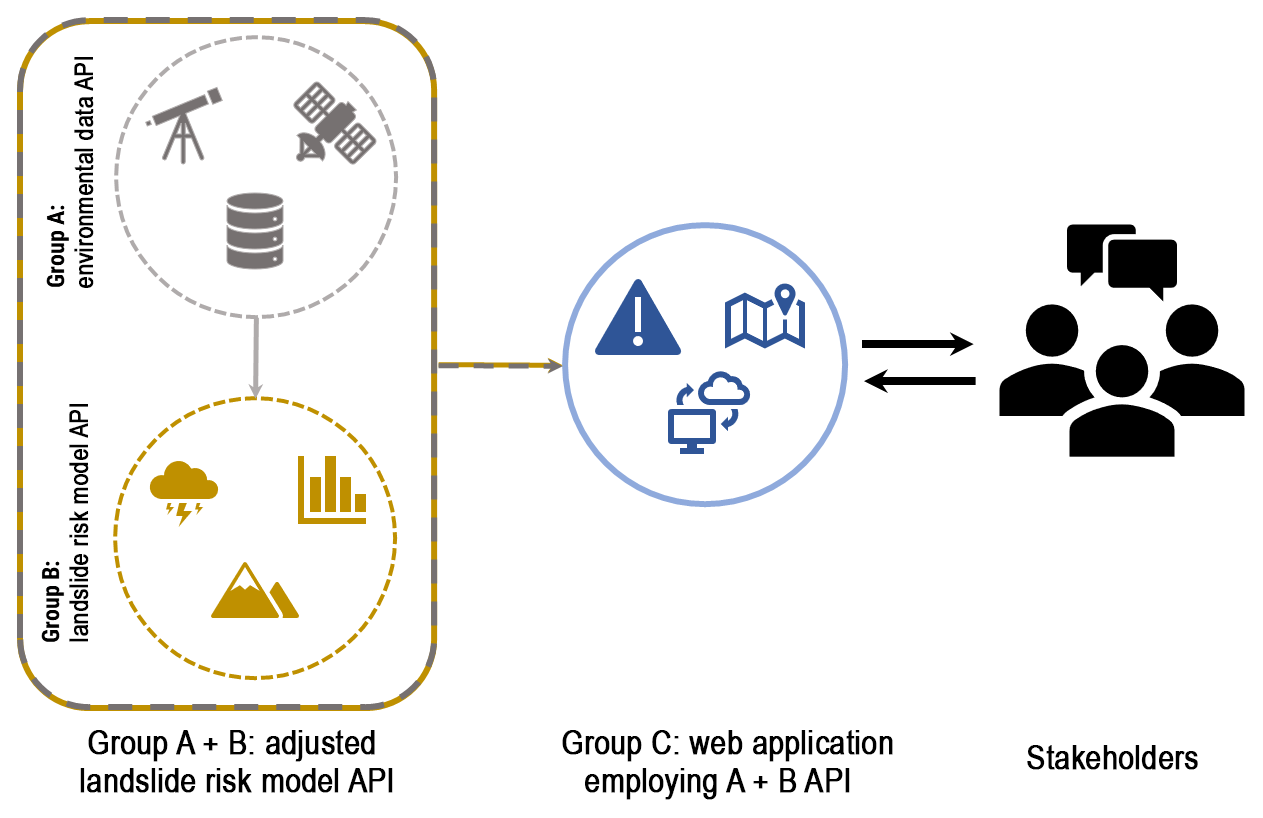- Salinas Valley Integrated Ground And Surface Water Model User's Manual System
- Salinas Valley Integrated Ground And Surface Water Model User's Manual Free

- Burow, K.R., Panshin, S.Y., Dubrovsky, N.M., Vanbrocklin, D., & Fogg, G.E. (1999). Evaluation of Processes Affecting 1,2-Dibromo-3-Chloropropane (DBCP) Concentrations in Ground Water in the Eastern San Joaquin Valley, California: Analysis of Chemical Data and Ground-Water Flow and Transport Simulations. U.S. Geological Survey pub. WRI 99-4059, pp. 57.Google Scholar
- Busenberg, E., & Plummer, L.N. (1992). Use of chlorofluorocarbons (CCl3F and CCl2F2) as hydrologic tracers and age-dating tools: The alluvium and terrace system of Central Oklahoma. Water Resour. Res., 28, 2257–2283.CrossRefADSGoogle Scholar
- California Agricultural Technology Institute. (1988). Irrigation systems and water application efficiencies. CATI Center for Irrigation Technology, publication 880104. California: California State University, Fresno, pp. 6.Google Scholar
- Campbell, G. (1974). A simple method for determining unsaturated conductivity from moisture retention data. Soil Science, 117, 311–314.Google Scholar
- CDPR. (2005). 1990–2003 electronic Pesticide Use Data, California Department of Pesticide Regulation, available on-line: http://www.cdpr.ca.gov/docs/pur/purmain.htm, verified November 1, 2005.
- Cook, P.G., Solomon, D.K., Plummer, L.N., Busenberg, E., & Schiff, S.L. (1995). Chlorofluorocarbons as tracers of ground water transport processes in a shallow, silty sand aquifer. Water Resour. Res., 31, 425–434.CrossRefADSGoogle Scholar
- Decisioneering. (2005). Crystal Ball 7.1 User Manual. Denver CO, pp. 366.Google Scholar
- DWR. (1983). The California Water Plan: projected use and available water supplies to 2010. California Department of Water Resources Bulletin, 160–83, pp. 268.Google Scholar
- DWR. (1994). California Water Plan Update. California Department of Water Resources Bulletin, 160–93, vol. 2, pp. 315.Google Scholar
- Garretson, C. (1999). Protocol 182: Monitoring the Concentration of Detected Pesticides in Wells Located in Highly Sensitive Areas. Environ. Monitoring Branch, California Dept. Pesticide Regulation. available on-line: http://www.cdpr.ca.gov/docs/empm/pubs/protocol.htm, verified November 1, 2005.
- Gronberg, J.M., Dubrovsky, N.M., Kratzer, C.R., Domagalski, J.L., Brown, L., & Burow, K. (1998). Environmental Setting of the San Joaquin-Tulare Basins, California. U.S. Geol. Survey pub. WRI 97-4205, Sacramento, CA, pp. 45.Google Scholar
- Helsel, D.R., & Hirsch, R.M. (1991). Statistical methods in water resources. U.S. Geological Survey, pp. 524, available online: http://water.usgs.gov/pubs/twri/twri4a3/, verified November 1, 2005.
- Hutson, J.L., & Wagenet, R.J. (1992). LEACHM, Leaching Estimation and Chemistry Model version 3. Research Series No. 92-3, Dept. of Soil, Crop, and Atmospheric Sciences, Cornell University, Ithaca, New York.Google Scholar
- Johnson, W.G., & Lavy, T.L. (1994). In-site dissipation of benomyl, carbofuran, thiobencarb, and triclopyr at three soil depths. J. Env. Qual., 23, 556–562.Google Scholar
- Kordel, W., Wahle, U., Knoche, H., & Hund, K. (1995). Degradation capacities of chlorotoluron and simazine in subsoil horizons. Sci. Tot. Environ., 171, 43–50.CrossRefGoogle Scholar
- Kruger, E.L., Somasundaram, L., Kanwar, R.S., & Coats, J.L. (1993). Persistence and degradation of 14C-atrazine and 14C-deisopropylatrazine as affected by soil depth and moisture conditions. Env. Tox. Chem., 12, 1959–1967.Google Scholar
- Loague, K., & Green, R.E. (1991). Statistical and graphical methods for evaluating solute transport models: Overview and application. J. Contam. Hydrol., 7, 51–73.CrossRefADSGoogle Scholar
- Miller, J.L., Wollum, A.G., & Weber, J.B. (1997). Degradation of carbon-14-atrazine and carbon-14-metolachlor in soil from four depths. J. Environ. Qual., 26, 633–638.Google Scholar
- Miller, R.J., Biggar, J.W., & Nielsen, D.R. (1965). Chloride displacement in Panoche clay loam in relation to water movement and distribution. Water Resources Res., 1,63–73.CrossRefADSGoogle Scholar
- Oster, J.D., Willardson, L.S., & Hoffman, G.J. (1972). Sprinkling and ponding techniques for reclaiming saline soils. Transactions ASCE, 15, 1115–1117.Google Scholar
- Rawls, W.J., & Brakensiek, D.L. (1985). Agricultural Management Effects on Soil Water Retention. In: DeCoursey, D.G. (eds), Proceedings of the 1983 Natural Resources Modeling Symposium, USDA-ARS, pp. 532.Google Scholar
- Schuette, J., Weaver, D., Troiano, J., Pepple, M., & Dias, J. (2003). Well Inventory Database, Cumulative Report 1986–2003. Environ. Monitoring Branch pub. EH03-08, Dept. Pesticide Regulation, Sacramento CA, pp. 151. Available online: http://www.cdpr.ca.gov/docs/empm/pubs/ehapreps. htm/.(verified November 1, 2005).
- Snyder, R.L., Hanson, B.R., & Coppock, R. (1986). How farmers irrigate in California. Univ. of Calif. Division of Ag., & Nat. Res., Leaflet 21414. Oakland, Calif., pp. 6.Google Scholar
- Snyder, R.L., Orang, M., Bali, K., & Eching, S. (2005). Basic Irrigation Scheduling. University of California. Available on-line: http://biomet.ucdavis.edu/irrigation_scheduling/bis/BIS.htm, (verified November 1, 2005).
- Spurlock, F, Burow, K., & Dubrovsky, N. (2000). Chlorofluorocarbon dating of herbicide containing well waters in Fresno and Tulare Counties. California. J. Env. Qual., 29, 474–483.Google Scholar
- Troiano, J., Garretson, C., Krauter, C., Brownell, J., & Hutson, J. (1993). Influence of amount and method of irrigation water application on leaching of atrazine. J. Environ. Qual., 22, 290–298.CrossRefGoogle Scholar
- Troiano, J., Weaver, D., Marade, J., Spurlock, F., Pepple, M., Nordmark, C., & Bartkowiak, D. (2001). Summary of Well Water Sampling in California to Detect Pesticide Residues Resulting from Nonpoint-Source Applications. J. Environ. Qual., 30, 448–459.PubMedGoogle Scholar
- Troiano, J., Marade, J., & Spurlock, F. (1999). Empirical Modeling of Spatial Vulnerabilitiy Applied to a Norflurazon Retrospective Well Study in California. J. Environ. Qual., 28, 397–403.Google Scholar
- UC DANR. (1989). Irrigation scheduling. A guide for efficient on-farm water management. University of California, Division of Agricultural and Natural Resources publication 21454, pp. 80.Google Scholar
- UCIPM. (2004). University of California Statewide Integrated Pest Management Program, California Weather Data, available on-line: http://www.ipm.ucdavis.edu:/WEATHER/ wxretrieve.html, (verified November 1, 2005).
- USDA-ARS. (2005). The Pesticide Properties Database. available on-line: http://www.arsusda.gov/acsl/services/ppdb3/, verified November 1, 2005.
- Vanclooster, M., Boesten, J.J.T.I., Trevisan, M., Brown, C.D., Capri, E., Eklo, O.M., Gottesbüren, B., Gouy, V. & van der Linden, A.M.A. (2000). A European test of pesticide-leaching models: methodology and major recommendations. Agricultural Water Management, 44, 1–19.CrossRefGoogle Scholar
- Watermark Computing. (1998). PEST – Model Independent Parameter Estimation. User's manual. Brisbane, Australia.Google Scholar
- Zalkin, F., Wilkerson, M., & Oshima, R.J. (1984). Pesticide movement to ground water volume II: Pesticide contamination in the soil profile at DBCP, EDB, simazine, and carbofuran application sites. Environ. Mon. Branch pub. EH 84-03, Calif. Dept. Pesticide Regulation pub. EH 84-03. Available on-line: http://www.cdpr.ca.gov/docs/empm/pubs/ehapreps.htm/ (verified November 1, 2005).
- Zoldoske, D.F. (2002). San Joaquin Valley Grower Irrigation Survey. CSU Fresno Center for Irrigation Technology pub. 021201, pp. 23.Google Scholar

Salinas Valley Integrated Ground And Surface Water Model User's Manual System

Salinas Valley Integrated Ground And Surface Water Model User's Manual Free
InBUSINESS Q3 2016. Clever inside The most popular Superb model, the Ambition, is available with a host of standard features such as: Bi-Xenon Headlights with LED day time lights. Jun 18, 2019 Digital Technology is Making Huge Leaps in Ag By Jessica Theisman, Associate Editor. Digital technology is making huge leaps in agriculture. California Ag Today recently spoke with Kirk Haney, CEO of Radicle Growth, a venture capitalist fund concentrated on developing new, innovative companies focused on food, agriculture, health, and sustainability. Find News from May 2015 on ConsumerAffairs. Our list of News includes automotive, appliance, food, technology, clothing, and more. Goleta Valley Cottage Hospital and Santa Ynez Valley Cottage. Global in the central United States. Bulletin of the American Meteorological Change Biology, 4, 359−374. Society, 79, 2693−2714. Qin, Z., & Karnieli, A. Progress in the remote sensing of land surface temperature and ground emissivity using NOAA–AVHRR. International Journal of.